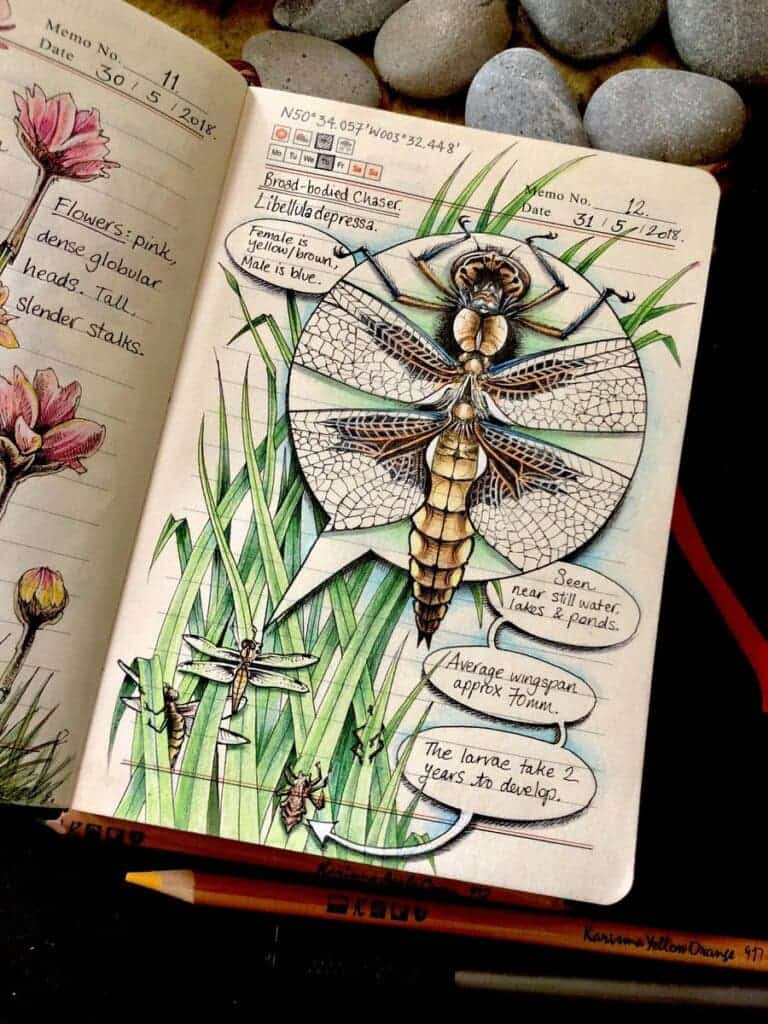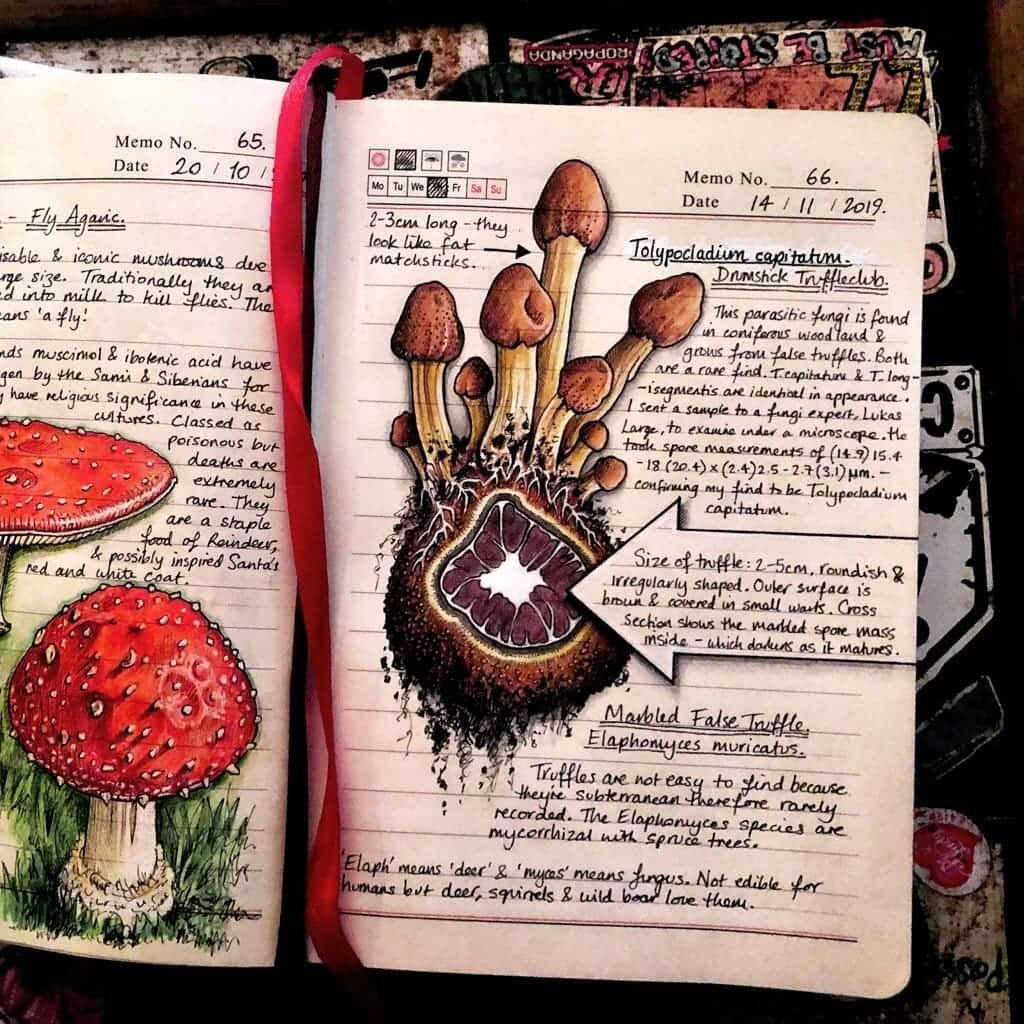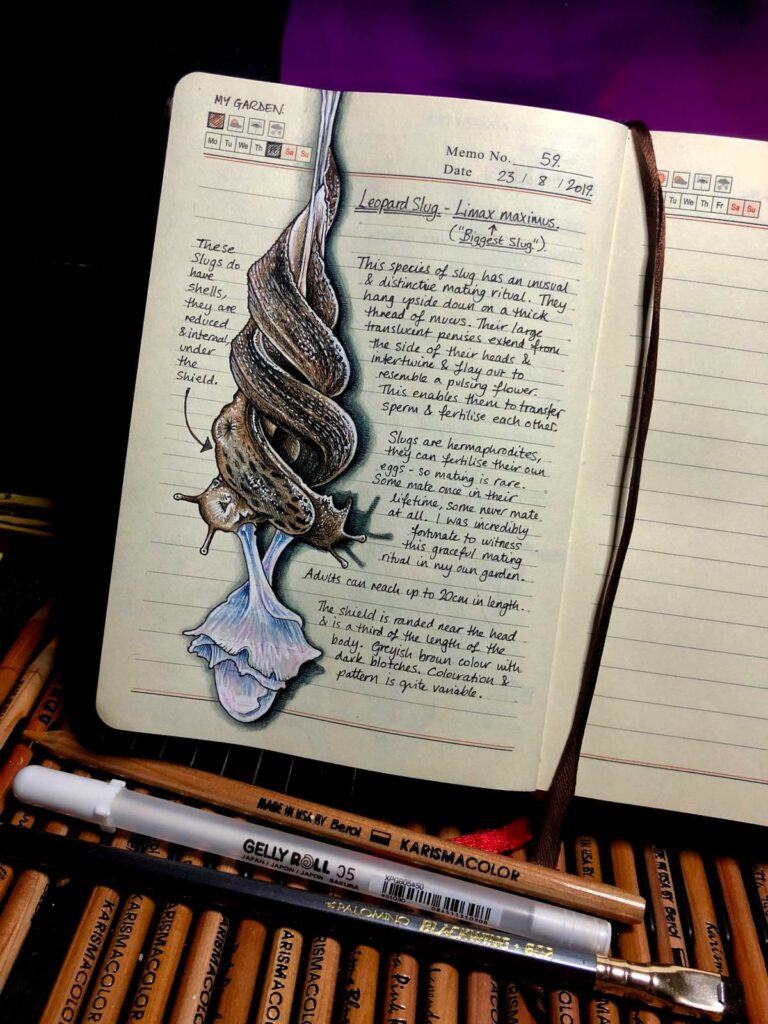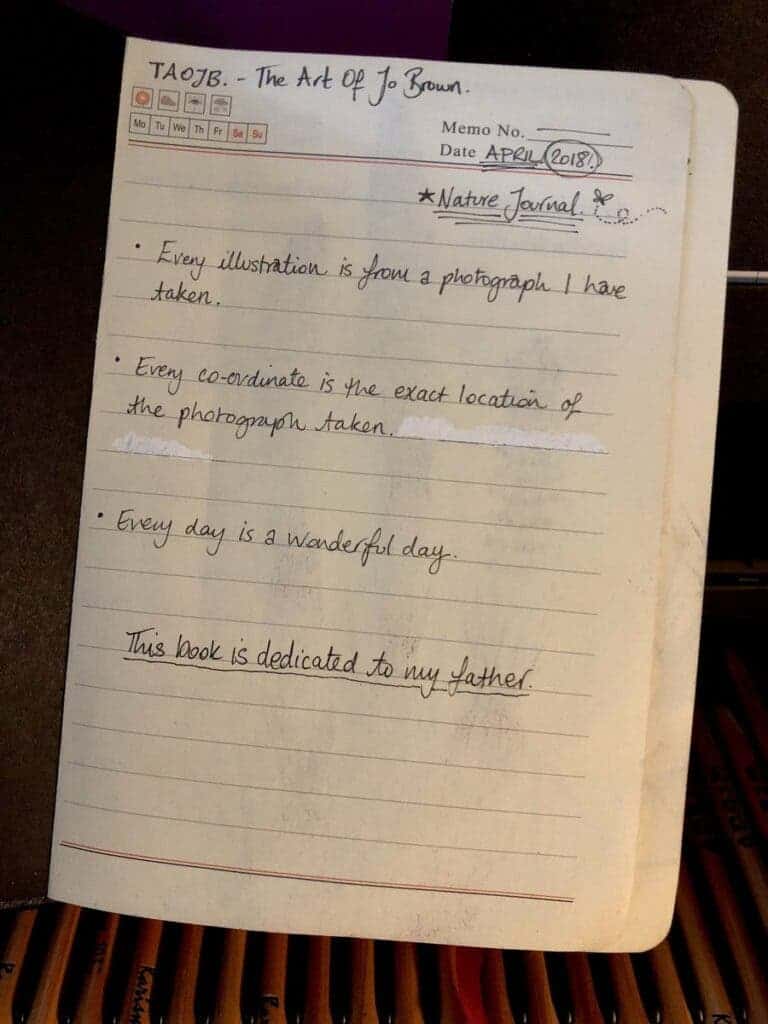Most people feel relaxed and recharged after an outdoor nature walk. But it’s not often that they stop to take in the beauty of what’s outside. Every small insect, every blade of grass, every colorful mushroom can be beautiful in its own way.
With patience, Jo Brown captures that beauty in splendid detail. In her Nature Journal, she’s built an exquisite collection of common species you may very well encounter in your own corner of nature.
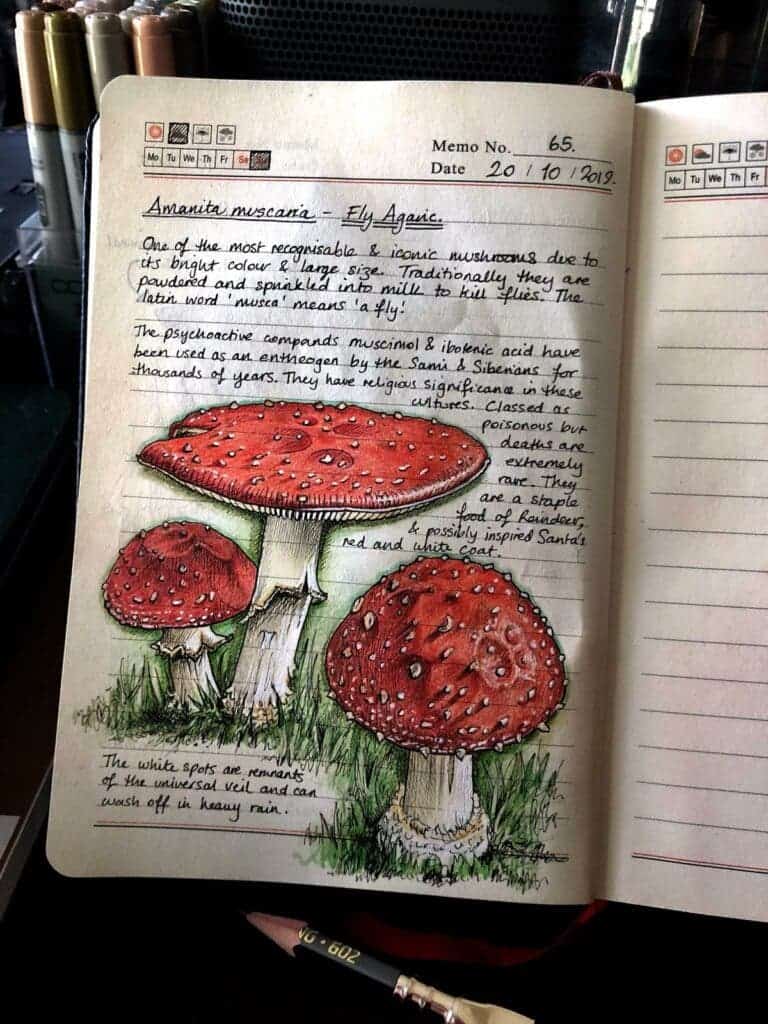
Working from her home studio in Teignmouth, Devon, UK, Brown illustrates the natural world in pen, ink and markers. She’s takes photos of the things she sees outside and then makes intricate drawings of them.
Each page of her notebook contains a pen and colored pencil drawing. Sometimes, she makes detailed descriptions of the plant or notes its peculiarities. The Latin and common name of each species are noted, along with the common characteristics and where it was found.
She started this Nature Journal because she “wanted to record the things she was discovering”. Nature is one of the most important things for Brown, and her attention to detail shines in these detailed illustrations.
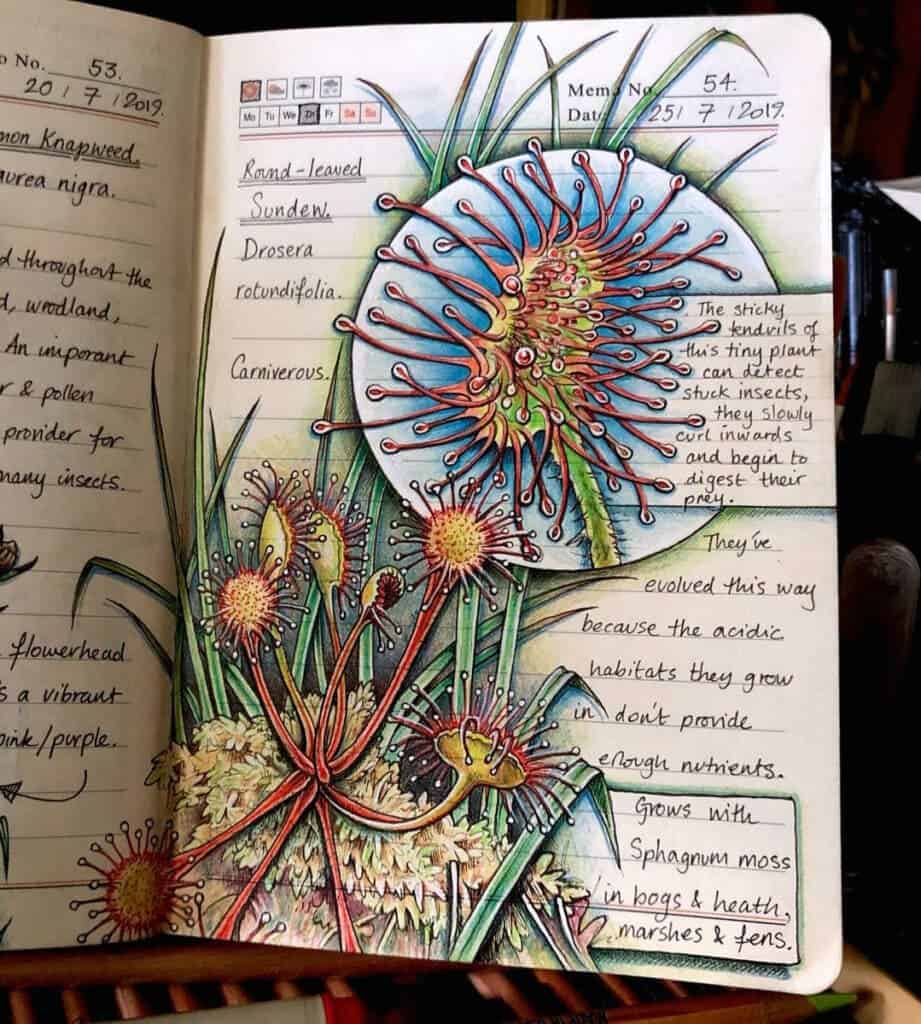
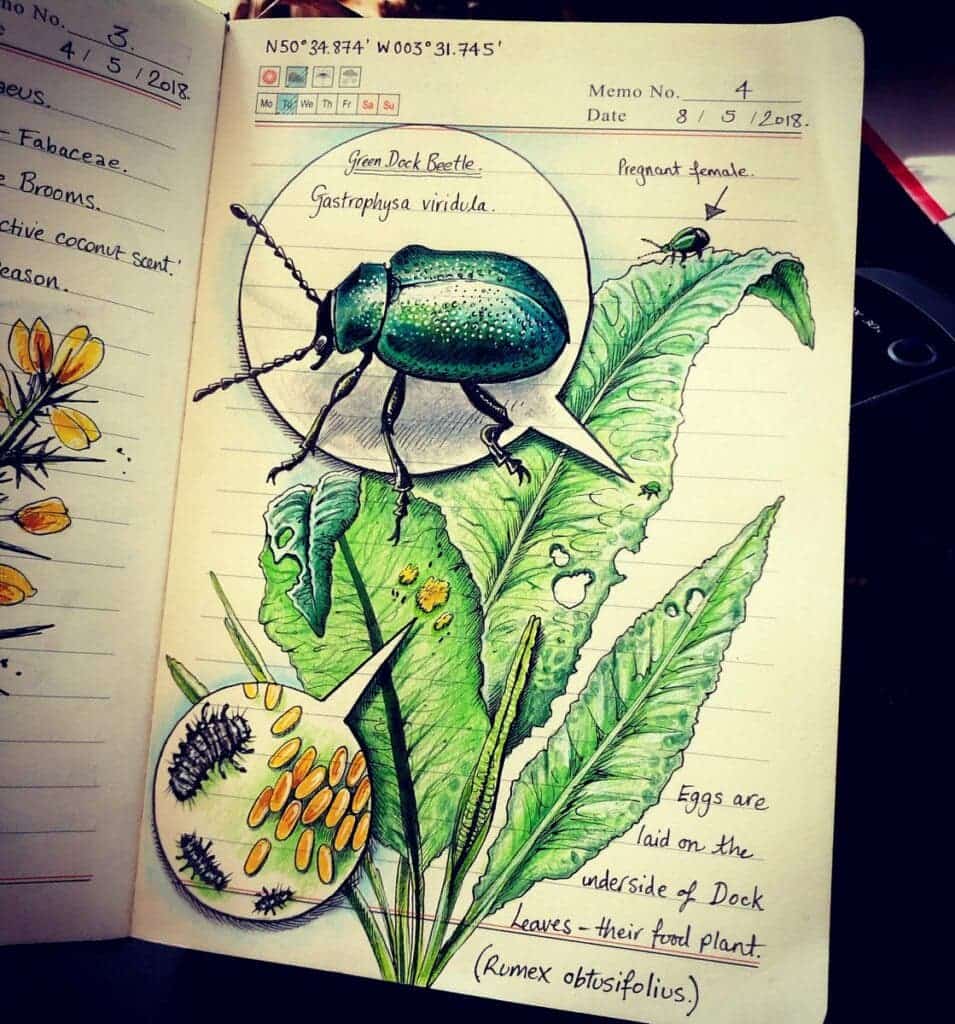
It’s not really the rare species that draw her eye. Instead, her attention is mostly focused on common plants, insects, and birds. You don’t have to look too far for them, Brown says: with “a little patience and quiet observation,” we can all observe this type of beauty.
Although, truth be told, observing nature is one thing, but producing drawings this beautiful is entirely different.
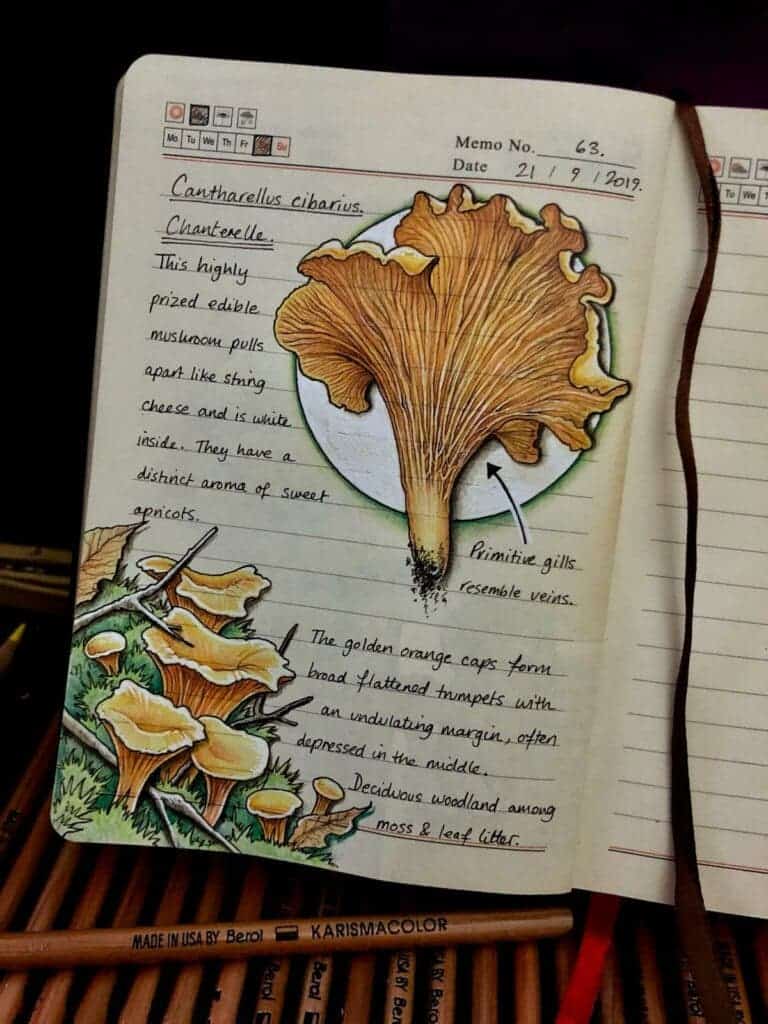
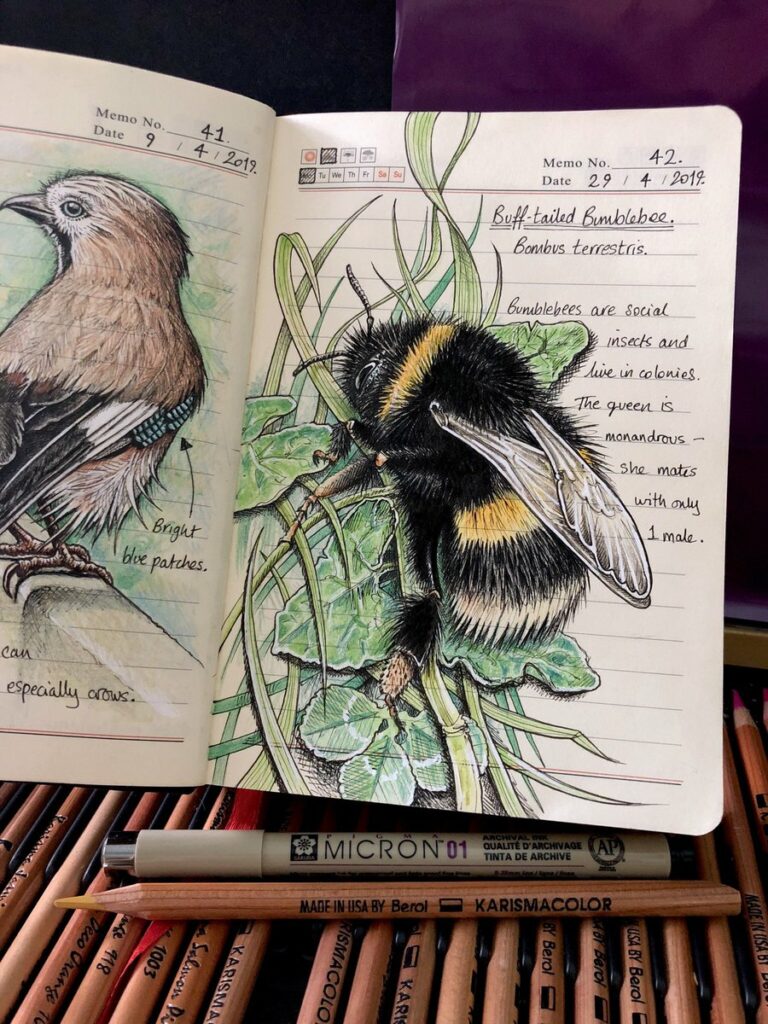
Brown continues in the tradition of the naturalists of yore. Before photography became a thing, drawings like this were the best source of visual information for species, and journals with drawings like this were the best visual source of biological description.
To keep up with Jo Brown’s journeys into the nature of the countryside, follow her on Instagram and Twitter. Her black Moleskine notebook is also reproduced exactly in a forthcoming book, Secrets of a Devon Wood — a worthwhile read for naturalists and nature lovers of all ages.
